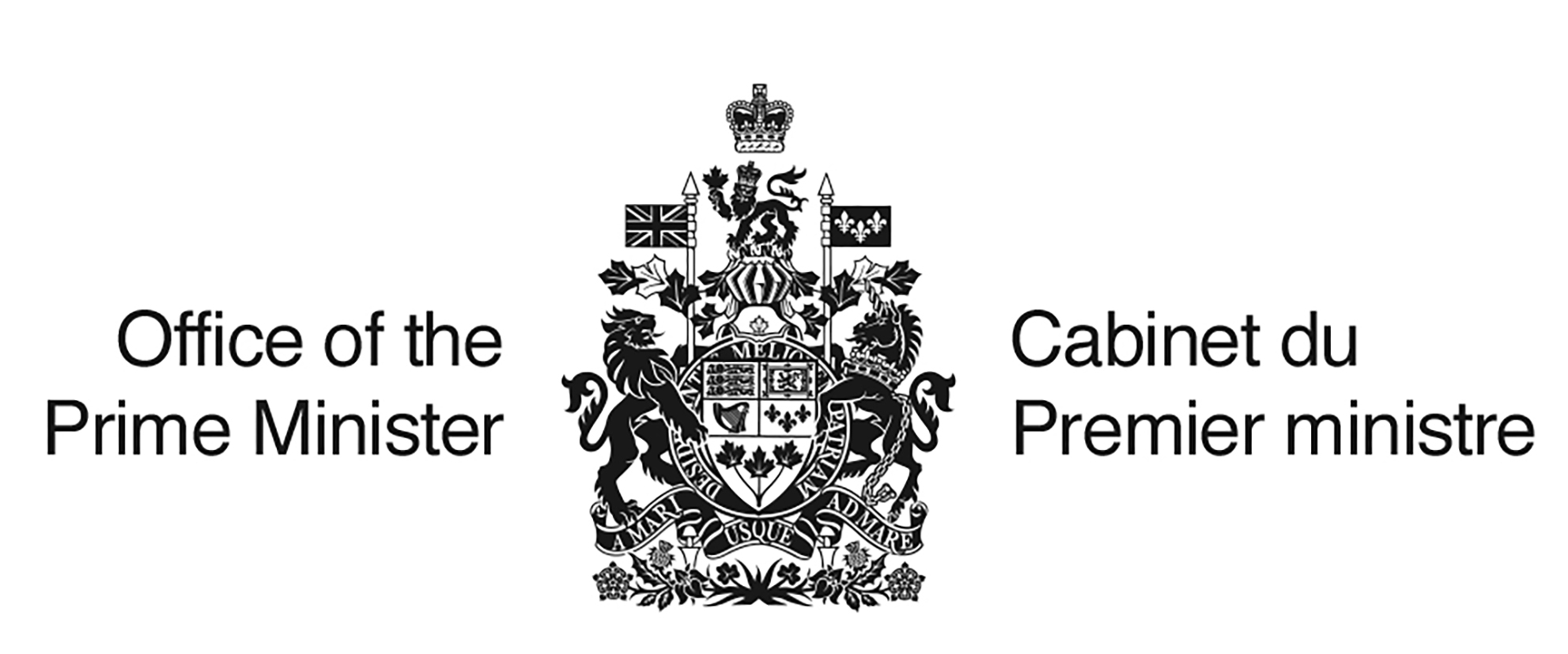 Canada’s government has moved quickly to protect and strengthen the sectors most affected by U.S. tariffs – introducing new measures to help workers gain new skills, support businesses as they modernise and diversify, and boost domestic demand for Canadian goods. Building on previously announced measures to help transform the Canadian steel and softwood lumber industries, the following new initiatives were announced:
Canada’s government has moved quickly to protect and strengthen the sectors most affected by U.S. tariffs – introducing new measures to help workers gain new skills, support businesses as they modernise and diversify, and boost domestic demand for Canadian goods. Building on previously announced measures to help transform the Canadian steel and softwood lumber industries, the following new initiatives were announced:
- Further limit foreign steel imports
- Make it easier to build with Canadian steel and Canadian lumber
- Canada will work with railway companies to cut freight rates for transporting Canadian steel and lumber interprovincially by 50%.
- To maximise the use of Canadian softwood lumber in housing, Build Canada Homes will prioritise shovel-ready, multi-year projects.
- Canada will implement our Buy Canadian Policy later this year, which requires that all contracts worth over $25 million prioritise Canadian materials – including steel and lumber.
- Increase protections for Canadian steel and lumber workers and businesses
- Canada will earmark more than $100 million to provide support in all sectors with an active Work-Sharing agreement.
- Canada will provide an additional $500 million to the BDC Softwood Lumber Guarantee Program.
- For softwood lumber firms facing liquidity pressures, Canada will earmark $500 million under the Large Enterprise Tariff Loan facility.
- Canada will launch a Canadian Forest Sector Transformation Task Force.

 The United Steelworkers union (USW) welcomes the federal government’s new measures to support Canada’s steel and softwood lumber sectors, calling them a meaningful step forward in the face of US tariffs and global market instability. The package includes tighter import controls, a 25% surtax on steel derivatives, strengthened border enforcement, expanded liquidity supports for softwood producers, a top-up to the Work-Sharing program, lower interprovincial freight costs, and new domestic-content requirements for federal projects. …Marty Warren, USW National Director… underscored that the Work-Sharing top-up will help workers stay on the job during temporary downturns and also pointed to the importance of strengthening procurement rules. On softwood lumber, the union welcomes the government’s efforts… “But let’s be honest, forestry towns cannot rebuild on temporary fixes. A long-term resolution to the softwood lumber dispute with the United States is essential. Without it, workers and communities remain vulnerable to decisions they cannot control.”
The United Steelworkers union (USW) welcomes the federal government’s new measures to support Canada’s steel and softwood lumber sectors, calling them a meaningful step forward in the face of US tariffs and global market instability. The package includes tighter import controls, a 25% surtax on steel derivatives, strengthened border enforcement, expanded liquidity supports for softwood producers, a top-up to the Work-Sharing program, lower interprovincial freight costs, and new domestic-content requirements for federal projects. …Marty Warren, USW National Director… underscored that the Work-Sharing top-up will help workers stay on the job during temporary downturns and also pointed to the importance of strengthening procurement rules. On softwood lumber, the union welcomes the government’s efforts… “But let’s be honest, forestry towns cannot rebuild on temporary fixes. A long-term resolution to the softwood lumber dispute with the United States is essential. Without it, workers and communities remain vulnerable to decisions they cannot control.”


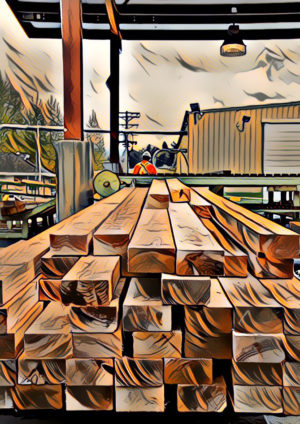 Help is on the way for Canadian steel producers and those in softwood lumber affected by the ongoing trade dispute with the United States. Multiple senior government sources confirmed that Prime Minister Mark Carney will announce measures on Wednesday to protect the steel industry, which has been hit with 50 per cent tariffs by the Trump administration. The measures include cutting limits to the amount of steel that can be imported into the country from nations that do not have a free trade agreement with Canada. …The Carney government will also increase the total money available to struggling softwood lumber companies to $1.2 billion. It’s a $500-million increase from the previously announced Softwood Lumber Development Program, which gives companies access to government-backed loans. …Trade talks between the two countries have been put on pause for the last month.
Help is on the way for Canadian steel producers and those in softwood lumber affected by the ongoing trade dispute with the United States. Multiple senior government sources confirmed that Prime Minister Mark Carney will announce measures on Wednesday to protect the steel industry, which has been hit with 50 per cent tariffs by the Trump administration. The measures include cutting limits to the amount of steel that can be imported into the country from nations that do not have a free trade agreement with Canada. …The Carney government will also increase the total money available to struggling softwood lumber companies to $1.2 billion. It’s a $500-million increase from the previously announced Softwood Lumber Development Program, which gives companies access to government-backed loans. …Trade talks between the two countries have been put on pause for the last month.

 MACKENZIE, BC — Forestry company Conifex Timber announced that it will temporarily curtail operations at its Mackenzie, BC sawmill for a planned four-week period commencing December 15, 2025. The curtailment is being implemented in response to, among other things, continued weakness in North American lumber markets. The curtailments will begin on December 15, for a planned four-week duration, Conifex said, adding that it is expected to reduce production by roughly 13 million board feet. The North American timber industry has gone through several curtailments in response to US President Trump’s decision to implement tariffs. …The company said it does not anticipate any challenges in securing sawlogs to maintain capacity operations in the future, once market conditions permit a return to full operations. It also expects to see gradual recovery in demand in the second half of 2026.
MACKENZIE, BC — Forestry company Conifex Timber announced that it will temporarily curtail operations at its Mackenzie, BC sawmill for a planned four-week period commencing December 15, 2025. The curtailment is being implemented in response to, among other things, continued weakness in North American lumber markets. The curtailments will begin on December 15, for a planned four-week duration, Conifex said, adding that it is expected to reduce production by roughly 13 million board feet. The North American timber industry has gone through several curtailments in response to US President Trump’s decision to implement tariffs. …The company said it does not anticipate any challenges in securing sawlogs to maintain capacity operations in the future, once market conditions permit a return to full operations. It also expects to see gradual recovery in demand in the second half of 2026.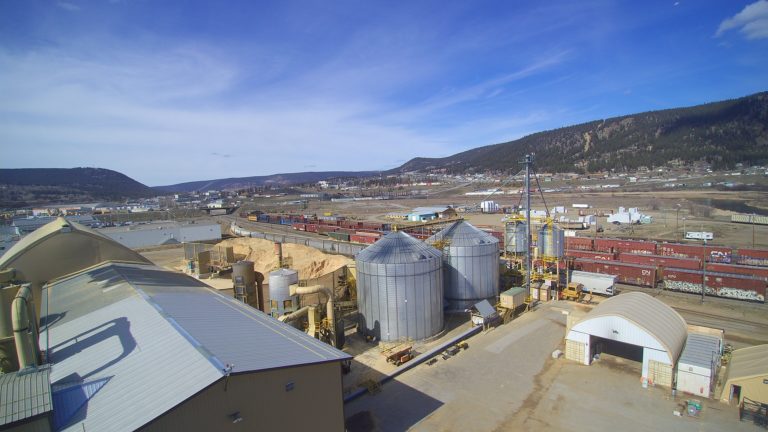





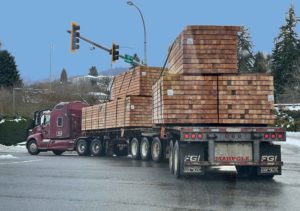 Ottawa threw the beleaguered softwood lumber industry a bone. …The new measures include $500 million in new loan guarantees for softwood lumber companies. “Loans are only good if i can sell my prioduct and pay for those loans,” said Brian Menzies, at the Independent Wood Processors Association of BC. “At 45%, I can t sell my product into the United States.” Other steps announced include cutting freight rates. …The measures are window dressing – say some – when compared to the impact of the steel industry supports. “I’m afraid we’ve come to the point that ‘Sophies choice’ is happening and softwood lumber is the child who’s going to be left behind,” said Menzies. It’s a concern shared at Leslie Forest Products, in Delta where James Sanghera said the measures won’t make a difference. “Most of the wood we’re sending down to the States is going on truck.”
Ottawa threw the beleaguered softwood lumber industry a bone. …The new measures include $500 million in new loan guarantees for softwood lumber companies. “Loans are only good if i can sell my prioduct and pay for those loans,” said Brian Menzies, at the Independent Wood Processors Association of BC. “At 45%, I can t sell my product into the United States.” Other steps announced include cutting freight rates. …The measures are window dressing – say some – when compared to the impact of the steel industry supports. “I’m afraid we’ve come to the point that ‘Sophies choice’ is happening and softwood lumber is the child who’s going to be left behind,” said Menzies. It’s a concern shared at Leslie Forest Products, in Delta where James Sanghera said the measures won’t make a difference. “Most of the wood we’re sending down to the States is going on truck.”



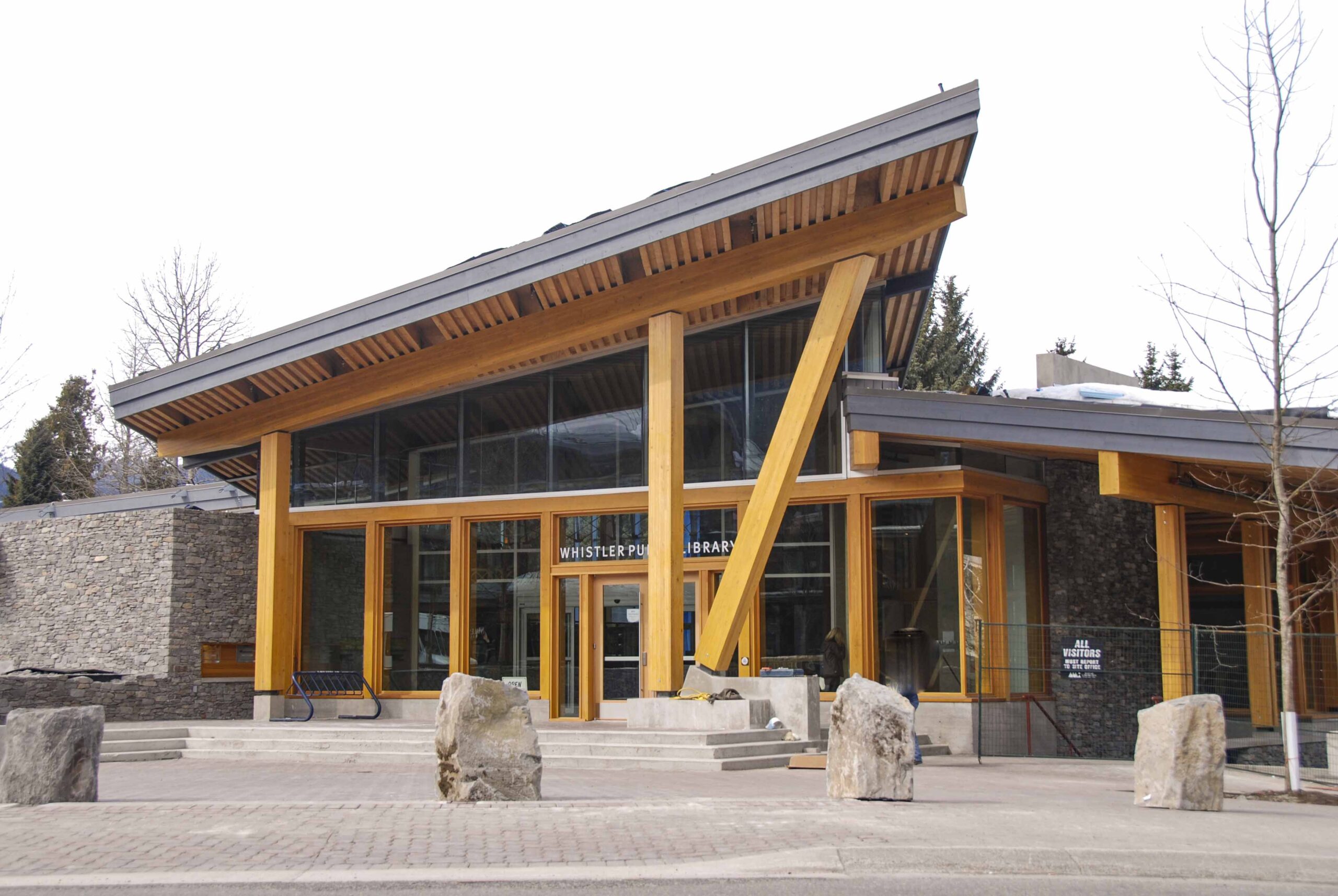 The audience of dedicated urbanists at Vancouver’s Robson Square Theatre was startled earlier this year when the first speaker at a debate about mass timber—which B.C. has been promoting vigorously—said it isn’t the for-sure climate-change silver bullet that everyone likes to think it is. Adam Rysanek, a UBC professor of environmental systems who specializes in energy efficiency, poked hard at the assumption that, because everyone thinks of mass timber as just wood—a plant! that comes out of the ground!—it must be natural and environmentally friendly and surely better than concrete. But Rysanek kept making the point at the Urbanarium debate that those ideas are not fully proven. A study he cited, which aimed to factor in all the uncertainties of carbon emissions in different types of building materials, found there is not a clear answer yet about the differences between mass timber and concrete.
The audience of dedicated urbanists at Vancouver’s Robson Square Theatre was startled earlier this year when the first speaker at a debate about mass timber—which B.C. has been promoting vigorously—said it isn’t the for-sure climate-change silver bullet that everyone likes to think it is. Adam Rysanek, a UBC professor of environmental systems who specializes in energy efficiency, poked hard at the assumption that, because everyone thinks of mass timber as just wood—a plant! that comes out of the ground!—it must be natural and environmentally friendly and surely better than concrete. But Rysanek kept making the point at the Urbanarium debate that those ideas are not fully proven. A study he cited, which aimed to factor in all the uncertainties of carbon emissions in different types of building materials, found there is not a clear answer yet about the differences between mass timber and concrete.
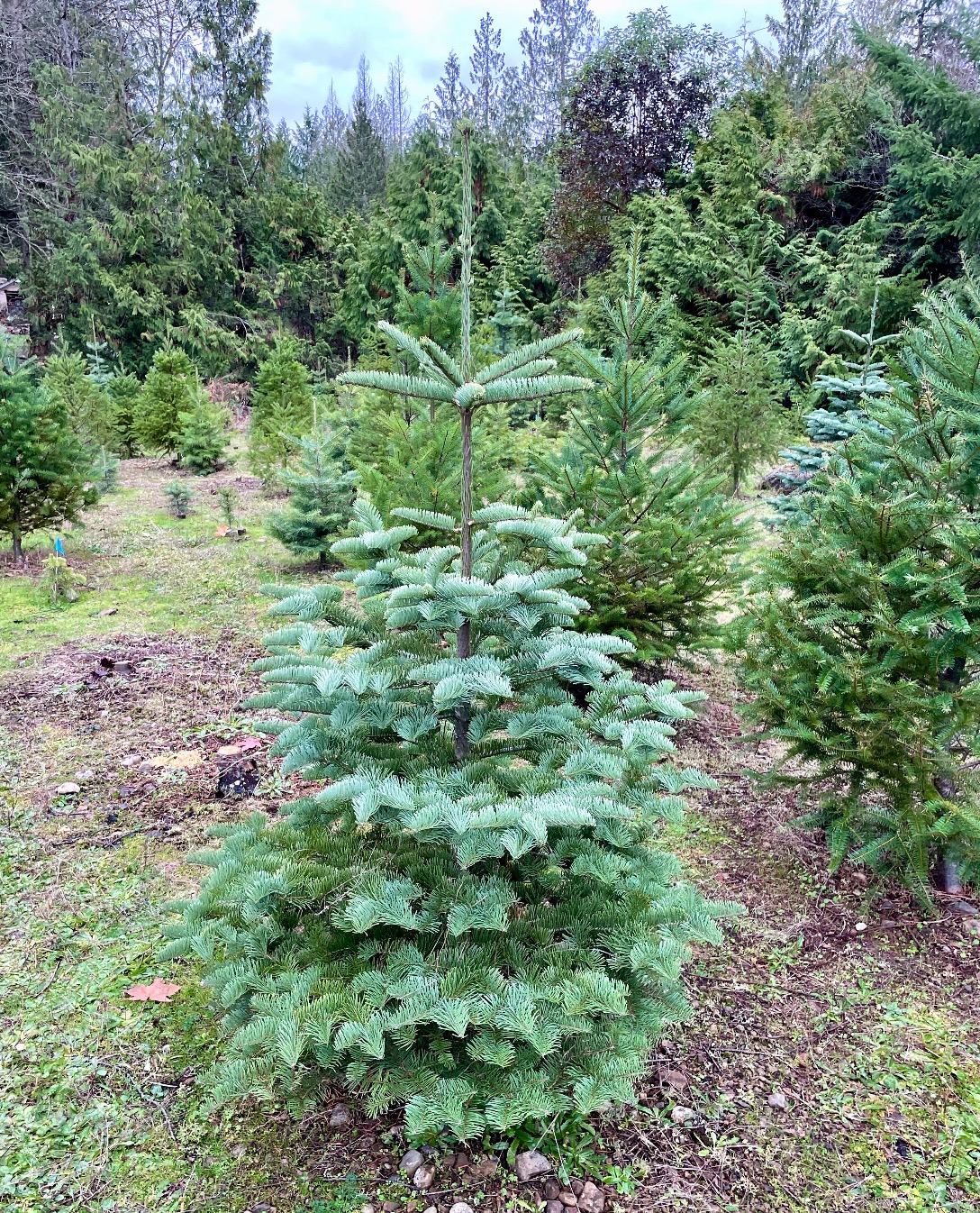 Modern-day circumstances are slowly transforming the Christmas tree farming industry. …weather is a challenge Michael Cormack faces on the Christmas tree farm he owns and operates in Ontario. … “Mother nature is a big, big factor in the business,” Cormack said. “This year in July, we were averaging over 29 C. So we had trees from two to three years ago that just died. … Four years ago, we had a tornado here that wiped out a bunch of our stuff.” …Another major factor is the cost of living crisis. …“Right now many of the farms are owned by elderly growers, and they’re aging out. So we’re losing a lot of farms year after year, which is unfortunate,” said Kelsey Leonard, founder and director of the Christmas Tree Lab at the University of Waterloo. …U.S. tariffs are also likely to have an impact on the costs associated with growing Christmas trees this year, Leonard said.
Modern-day circumstances are slowly transforming the Christmas tree farming industry. …weather is a challenge Michael Cormack faces on the Christmas tree farm he owns and operates in Ontario. … “Mother nature is a big, big factor in the business,” Cormack said. “This year in July, we were averaging over 29 C. So we had trees from two to three years ago that just died. … Four years ago, we had a tornado here that wiped out a bunch of our stuff.” …Another major factor is the cost of living crisis. …“Right now many of the farms are owned by elderly growers, and they’re aging out. So we’re losing a lot of farms year after year, which is unfortunate,” said Kelsey Leonard, founder and director of the Christmas Tree Lab at the University of Waterloo. …U.S. tariffs are also likely to have an impact on the costs associated with growing Christmas trees this year, Leonard said. The Forest History Association of BC is hosting its 43rd Annual General Meeting tonight, December 1, 2025 at 7:00 pm PST. All members are warmly invited to attend this virtual gathering and take part in shaping the direction of the organization for the coming year. The AGM will include key updates on current projects, board activities and election, and ongoing efforts to preserve and share BC’s forest and community history. For those interested in learning more about the FHABC’s mission—promoting research, storytelling, and education about the province’s rich forest heritage—visit their objectives
The Forest History Association of BC is hosting its 43rd Annual General Meeting tonight, December 1, 2025 at 7:00 pm PST. All members are warmly invited to attend this virtual gathering and take part in shaping the direction of the organization for the coming year. The AGM will include key updates on current projects, board activities and election, and ongoing efforts to preserve and share BC’s forest and community history. For those interested in learning more about the FHABC’s mission—promoting research, storytelling, and education about the province’s rich forest heritage—visit their objectives 



 B.C. has invited stakeholders, experts, Indigenous partners and government representatives from throughout the country to a wildfire symposium in Vancouver on Dec. 5, 2025. The focus will be the 2025 wildfire season, wildfire technology, active forest management and national readiness for future wildfires. The symposium includes advancing discussions on a national leadership strategy and stronger collaboration that will shape the framework of wildfire resiliency in Canada. Enhancing a national framework for wildfire resilience, including the challenges and opportunities people and communities are facing, is one intended outcome for the upcoming symposium on wildfires to be hosted in B.C. After the second-worst wildfire season nationally, B.C. is leading the symposium to bring together national and international experts, provincial, federal and territorial governments, as well as key industry and Indigenous partners, with the goal of sharing best practices and considering mitigation and preparation steps for 2026.
B.C. has invited stakeholders, experts, Indigenous partners and government representatives from throughout the country to a wildfire symposium in Vancouver on Dec. 5, 2025. The focus will be the 2025 wildfire season, wildfire technology, active forest management and national readiness for future wildfires. The symposium includes advancing discussions on a national leadership strategy and stronger collaboration that will shape the framework of wildfire resiliency in Canada. Enhancing a national framework for wildfire resilience, including the challenges and opportunities people and communities are facing, is one intended outcome for the upcoming symposium on wildfires to be hosted in B.C. After the second-worst wildfire season nationally, B.C. is leading the symposium to bring together national and international experts, provincial, federal and territorial governments, as well as key industry and Indigenous partners, with the goal of sharing best practices and considering mitigation and preparation steps for 2026.
 A proactive new tool that can help preserve old forests in British Columbia has been developed by University of Alberta researchers. A new study gives crucial insight into where to focus conservation measures, by identifying areas of old-growth forest in areas predicted to be stable in the face of climate change. The approach shifts the focus toward what can still be protected, says Nick Pochailo, who led the study…. “Old-growth forests located in areas of potential climatic stability offer exceptional long-term conservation value. By identifying these places, land managers can prioritize and plan conservation efforts more effectively.” …old-growth forests account for about 25 per cent of BC’s forested areas. They’ve shrunk from 25 million hectares to about half that due to logging, wildfires, and pests like the mountain pine beetle… computer models predict how these ecosystems might shift by the 2050s, then mapped the changes to geographically pinpoint areas most likely to survive.
A proactive new tool that can help preserve old forests in British Columbia has been developed by University of Alberta researchers. A new study gives crucial insight into where to focus conservation measures, by identifying areas of old-growth forest in areas predicted to be stable in the face of climate change. The approach shifts the focus toward what can still be protected, says Nick Pochailo, who led the study…. “Old-growth forests located in areas of potential climatic stability offer exceptional long-term conservation value. By identifying these places, land managers can prioritize and plan conservation efforts more effectively.” …old-growth forests account for about 25 per cent of BC’s forested areas. They’ve shrunk from 25 million hectares to about half that due to logging, wildfires, and pests like the mountain pine beetle… computer models predict how these ecosystems might shift by the 2050s, then mapped the changes to geographically pinpoint areas most likely to survive. 
%20(6).jpg)
 Yellowknife, Northwest Territories, will host a premier in-person event for Canada’s bioenergy sector from January 26 to 28, 2026—the
Yellowknife, Northwest Territories, will host a premier in-person event for Canada’s bioenergy sector from January 26 to 28, 2026—the  BELÉM, Brazil
BELÉM, Brazil The December issue of Forest Safety News is here, bringing timely insights and practical tools for safer forestry work this winter. One standout feature explores how RPAS drones are transforming field safety, reducing worker exposure during steep-slope layout, post-fire assessments, and difficult terrain navigation. It’s a look at technology that’s not just impressive — it’s making real crews safer in real time. This issue also recaps the 18th Annual Vancouver Island Safety Conference, where powerful keynote speakers shared stories of perseverance, leadership, and the importance of mental and physical well-being. The message was clear: safety culture is built person by person, conversation by conversation. You’ll also find a useful update on winter driving and hauling preparedness, including tips for planning routes, managing changing conditions, and supporting drivers during the toughest season of the year. Packed with practical advice, inspiring stories, and forward-looking innovations, this issue offers a strong finish to 2025 for BC’s forest sector.
The December issue of Forest Safety News is here, bringing timely insights and practical tools for safer forestry work this winter. One standout feature explores how RPAS drones are transforming field safety, reducing worker exposure during steep-slope layout, post-fire assessments, and difficult terrain navigation. It’s a look at technology that’s not just impressive — it’s making real crews safer in real time. This issue also recaps the 18th Annual Vancouver Island Safety Conference, where powerful keynote speakers shared stories of perseverance, leadership, and the importance of mental and physical well-being. The message was clear: safety culture is built person by person, conversation by conversation. You’ll also find a useful update on winter driving and hauling preparedness, including tips for planning routes, managing changing conditions, and supporting drivers during the toughest season of the year. Packed with practical advice, inspiring stories, and forward-looking innovations, this issue offers a strong finish to 2025 for BC’s forest sector. WorkSafeBC is holding a virtual public hearing on
WorkSafeBC is holding a virtual public hearing on